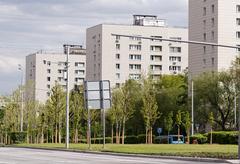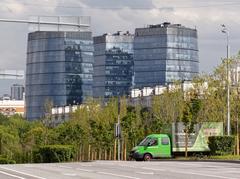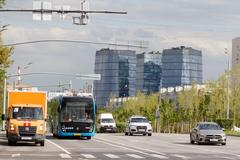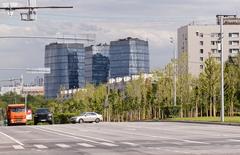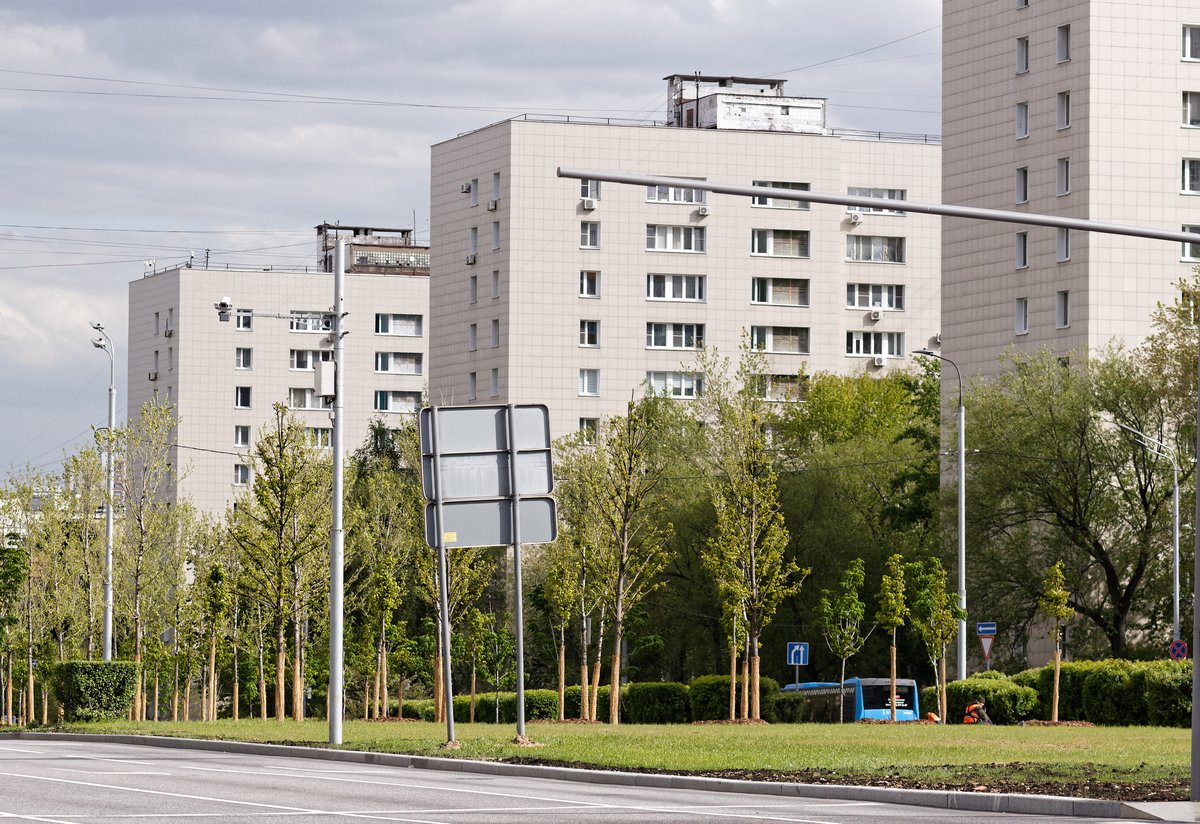
Nakhimovsky Prospekt Moscow: Visiting Hours, Tickets, and Tourist Guide
Date: 15/06/2025
Introduction: A Window into Moscow’s Urban Evolution
Nakhimovsky Prospekt, stretching through the southern districts of Moscow, is more than a major thoroughfare—it’s a living chronicle of the Russian capital’s post-war development, Soviet heritage, and contemporary urban life. Named after Admiral Pavel Nakhimov, a hero of the Crimean War, the avenue weaves through neighborhoods marked by Khrushchyovka-era housing and modern high-rises, embodying Moscow’s evolving identity. Conveniently serviced by multiple metro stations and a robust public transport network, Nakhimovsky Prospekt invites visitors to experience authentic Moscow away from the city’s most iconic tourist sites.
Whether you are a history enthusiast, a fan of Soviet architecture, or a traveler eager to see Moscow’s daily rhythms, this guide will help you navigate Nakhimovsky Prospekt’s history, transportation options, local culture, and nearby attractions. For up-to-date transit information, consult the Moscow Metro Official Site and explore trends in city mobility (Simple Transit).
Table of Contents
- History and Urban Significance
- Getting There and Around
- What to See and Do
- Key Landmarks and Nearby Attractions
- Visitor Information and Practical Tips
- FAQs
- Summary and Final Tips
- References and Further Reading
History and Urban Significance
Nakhimovsky Prospekt traces its origins to the 1950s, when it was first developed as 7th Cheryomushki Street. In 1965, it was renamed to honor Admiral Pavel Nakhimov, reflecting the Soviet tradition of memorializing national heroes through urban toponymy. The avenue cuts through Zyuzino, Kotlovka, and Cheryomushki—neighborhoods known for their Khrushchyovka apartment blocks, emblematic of Moscow’s rapid post-war expansion and efforts to address housing shortages.
Today, the avenue presents a striking juxtaposition of utilitarian Soviet housing and innovative modern architecture, such as the residential complex at the intersection with Vavilov Street (Asadov Studio). Nakhimovsky Prospekt thus stands as a microcosm of Moscow’s ongoing transformation.
Getting There and Around
Metro and Transit Access
Nakhimovsky Prospekt is highly accessible:
- Metro Stations:
- Nakhimovsky Prospekt (Line 9, Serpukhovsko-Timiryazevskaya) — operational since 1983, providing rapid service to central Moscow.
- Profsoyuznaya (Line 6, Kaluzhsko–Rizhskaya) — connects to key city districts.
- Surface Transport: Numerous bus, trolleybus, and electric bus routes run along the avenue, offering real-time digital updates at stops. Electric buses are increasingly prevalent, supporting Moscow’s green mobility initiatives (Simple Transit).
Accessibility
Most metro stations and newer public spaces along Nakhimovsky Prospekt are equipped with elevators, ramps, and tactile guidance for visually impaired visitors. However, it’s wise to check current accessibility features prior to travel.
What to See and Do
Architecture and Everyday Life
- Soviet and Modern Structures: Admire the avenue’s classic Khrushchyovka apartment blocks, as well as contemporary developments like the Vavilov Street complex, which features panoramic towers and glass bridges (Wikimedia Commons).
- Local Markets and Commerce: The Moskvoretsky Market and various bakeries, florists, and small shops provide a taste of daily Moscow life.
- Green Spaces: Parks and playgrounds along the avenue offer restful spots for relaxation, particularly pleasant in spring and autumn.
The Nakhimov Monument
A highlight for visitors, the Nakhimov Monument pays tribute to its namesake admiral. Set within landscaped gardens, it is accessible year-round without an entrance fee and serves as a tranquil spot for reflection and photographs.
Key Landmarks and Nearby Attractions
- Kolomenskoye Museum-Reserve: This UNESCO-listed estate is renowned for its wooden architecture and the Ascension Church. It is open daily from 10:00 AM to 6:00 PM (Touropia).
- Gorky Park: A classic Moscow recreation area, easily reached by metro within 30 minutes.
- Moscow State University (MGU): While not directly on the avenue, its proximity influences the neighborhood’s youthful vibe and abundance of cafes (Express to Russia).
- Novodevichy Convent: This UNESCO site is accessible via public transit, showcasing historic architecture and tranquil grounds.
- Shopping Centers: The “Nakhimovsky” shopping center and other retail options provide a mix of international brands and local products.
Visitor Information and Practical Tips
- Opening Hours: Nakhimovsky Prospekt is a public avenue, open at all times. Parks and the Nakhimov Monument grounds are generally accessible from 6:00 AM to 10:00 PM. Nearby attractions may have specific hours.
- Tickets: No tickets are required to walk the avenue or visit the Nakhimov Monument. Attractions like Kolomenskoye require paid entry; check official sites for pricing.
- Public Transport: Use the Troika card for seamless, cost-effective travel across metro, bus, and trolleybus lines.
- Language: Russian is the primary language, though English signage is common in metro stations and major shops. Learning basic Russian phrases or using a translation app is helpful.
- Safety: The area is generally safe, but standard urban precautions apply—keep an eye on belongings, especially in crowded places or at night.
- Cashless Payments: Widely accepted, but carrying some cash is recommended for small vendors.
- Restrooms: Available in metro stations and shopping centers (often for a small fee).
FAQs
Q: How do I get to Nakhimovsky Prospekt?
A: Take the Nakhimovsky Prospekt (Line 9) or Profsoyuznaya (Line 6) metro stations. Numerous buses also serve the area.
Q: Is the avenue accessible for travelers with disabilities?
A: Most metro stations and public spaces are equipped for accessibility, but check updates in advance.
Q: Are there guided tours?
A: Several local operators offer walking and cycling tours that include the avenue and its Soviet-era architecture.
Q: What are the best times to visit?
A: Spring and early autumn feature mild weather and lively street scenes.
Q: Where can I dine nearby?
A: The avenue is lined with Russian canteens (stolovayas), cafes, bakeries, and international eateries.
Q: Are there family-friendly activities?
A: Yes, parks, playgrounds, and markets along the avenue make it suitable for families.
Summary and Final Tips
Nakhimovsky Prospekt represents Moscow’s blend of historical legacy and modern dynamism. The avenue’s mix of Soviet and contemporary architecture, vibrant local life, and strong transit links make it ideal for urban explorers seeking an authentic slice of Moscow. For the best experience, visit in spring or early autumn, use a Troika card for transit, and take time to explore both the avenue and nearby cultural sites.
For real-time schedules, audio tours, and local insights, download the Audiala app. For more travel ideas, consult the Moscow City Tourism portal and explore related travel articles for inspiration.
References and Further Reading
- Moscow Metro Official Site (https://mosmetro.ru/en/)
- Simple Transit, The Future of Public Transportation in Moscow (https://www.simpletransit.com/posts/the-future-of-public-transportation-in-moscow-emerging-trends-and-technologies)
- Asadov Architectural Studio, Residential Complex on Nakhimovsky Prospect (https://asadov.studio/project/residential-complex-on-nakhimovsky-prospect-moscow/)
- Express to Russia, Moscow Vacation Guide (https://www.expresstorussia.com/guide/moscow_vacation_guide.html)
- Touropia, Tourist Attractions in Moscow (https://www.touropia.com/tourist-attractions-in-moscow/)
- Wikimedia Commons, Moscow, Nakhimovsky Prospect 27 (https://commons.wikimedia.org/wiki/File:Moscow,Nakhimovsky_Prospect_27(built_1973)_May_2025_01.jpg)
Images and maps should feature Nakhimovsky Prospekt’s metro stations, residential architecture, green spaces, and local markets. Alt text should include keywords such as “Nakhimovsky Prospekt Moscow” and “Moscow historical sites” for accessibility and SEO.
